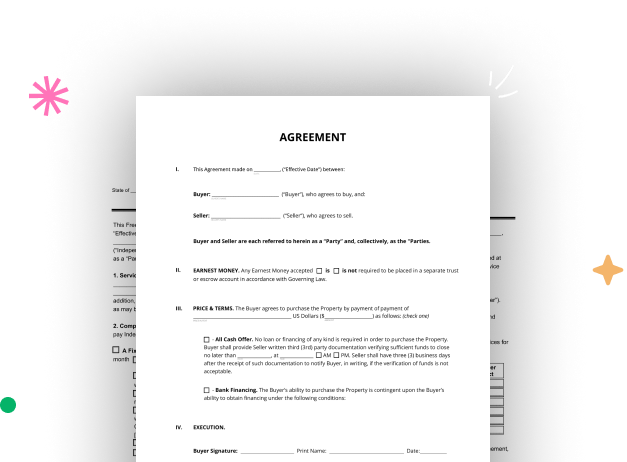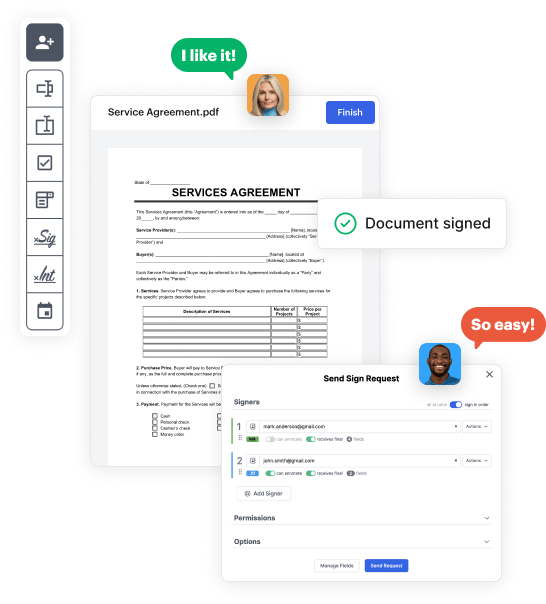

Start by signing up for a free DocHub account using any available sign-up method. If you already have one, simply log in.
Try out the complete set of DocHub's advanced features by registering for a free 30-day trial of the Pro plan and proceed to craft your Life Estate Legal Form.
In your dashboard, hit the New Document button > scroll down and choose to Create Blank Document. You’ll be taken to the editor.
Use the Page Controls icon indicated by the arrow to toggle between two page views and layouts for more convenience.
Explore the top toolbar to add document fields. Add and arrange text boxes, the signature block (if applicable), insert images, etc.
Arrange the fillable areas you incorporated per your chosen layout. Personalize the size, font, and alignment to ensure the form is easy to use and professional.
Save the ready-to-go copy in DocHub or in platforms like Google Drive or Dropbox, or design a new Life Estate Legal Form. Distribute your form via email or get a public link to reach more people.